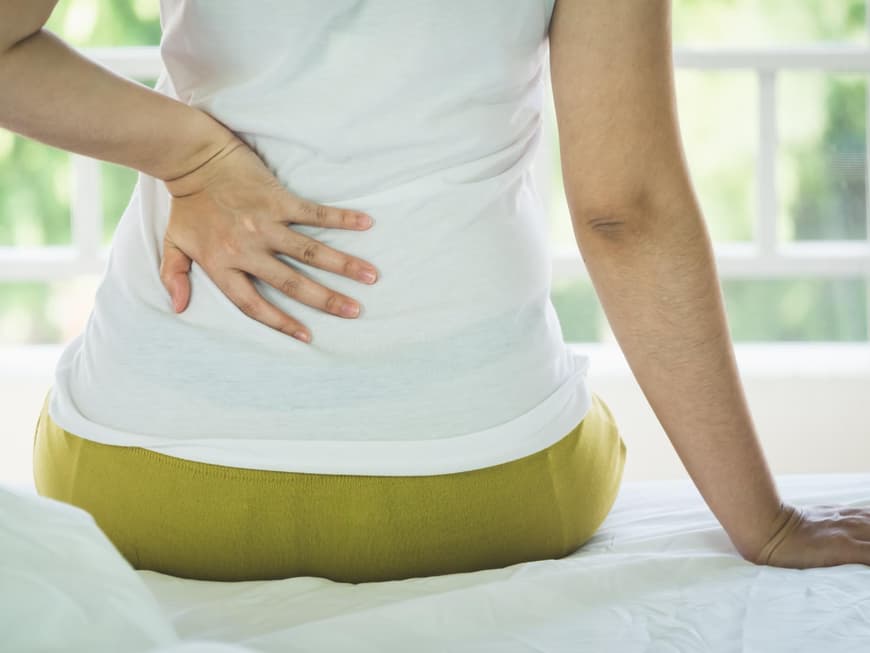
Back pain in the middle back: The causes
Back pain at the middle level of the spine is usually caused by problems with the thoracic spine. These arise, for example, from regional muscle irritation caused by changes in the rib-vertebral joints and skeletal deformities.
80 percent of back problems are caused by overloading (heavy, physical work), one-sided movements or incorrect posture. Lack of exercise, severe obesity and even smoking and excessive alcohol consumption also contribute, as do emotional conflicts and psychological stress. Teenagers and young adults are often affected by mid-back pain as a result of carrying rucksacks and school bags, and this group is also affected by growth. However, adults also complain of back pain for the reasons described above.
Read also: Back pain in the lower back
Treating back pain in the middle back
If you have acute complaints that last longer than three days, you should consult your doctor. It is unlikely that the pain will subside on its own. Until then, try applying heat - a bath or hot water bottles will help to relax the muscles. Painkillers such as ibuprofen or paracetamol relieve the pain in acute cases and help you to relax and remain mobile. These should also not be taken for longer than two to three days. Get out of your comfort zone - people tend to stay in a certain position when they have back pain. It is important to relax. Massages and back exercises can also be used once the acute pain has subsided. They are important parameters for becoming and remaining pain-free. If back pain keeps recurring, you should also speak to your doctor.
Also interesting: These sleeping positions help with back pain
Prevent back pain
In addition to balancing sport, exercise and avoiding excess weight, you should make sure that rucksacks, satchels, handbags etc. are not too heavy. Spread the load over several bags and carry them on both sides so that one part of the body is not burdened on one side. At the workplace, you should make sure that your desk is at the right height, for example. If you need a height-adjustable desk, talk to your employer. If you have a medical certificate, your employer will cover the costs. If this is only recommended for rehabilitation or is required for working from home, you must contact the pension provider.
